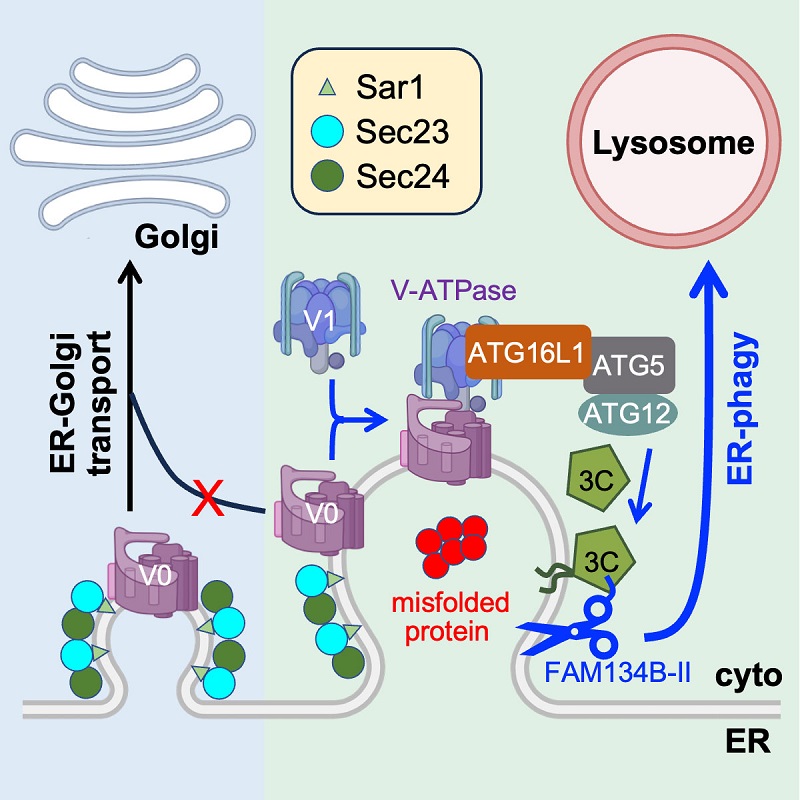
Recently, Prof. WANG Chih-chen/WANG Lei's group from the Institute of Biophysics, Chinese Academy of Sciences (CAS), revealed that accumulation of misfolded Z-AAT, a disease-causing mutant of α1-antitrypsin, at the ER exit sites (ERESs) inhibits ER-Golgi transport, and activates the V-ATPase-ATG16L1-LC3C axis to recruit FAM134B-II to initiate ER-phagy.
The study was published in Developmental Cell on Nov. 2.
The endoplasmic reticulum (ER) is the largest organelle in eukaryotic cells, serving as a major site of protein folding and maturation. ER-phagy, lysosomal degradation of obsolete ER portions, is crucial for protein quality control and turnover of the organelle to maintain its functionality. The selective recognition of ER by autophagic system is directed by ER-phagy receptor proteins. However, most ER-phagy receptors lacking a luminal domain cannot directly sense the signals originating from the ER lumen to initiate ER-phagy, but play a downstream execution role. The initiation mechanism for ER-phagy is still a key question awaiting an answer.
Z-AAT induces noncanonical ER-phagy at ERESs. Accumulation of misfolded Z-AAT at the ERESs impairs COPII-mediated ER-to-Golgi transport, and retains V0 subunits that further assemble V-ATPase at the arrested ERESs. V-ATPase subsequently recruits ATG16L1 onto ERESs to mediate in situ lipidation of LC3C. FAM134B-II is then recruited by LC3C via its LIR motif and elicits ER-phagy leading to efficient lysosomal degradation of Z-AAT. Activation of this ER-phagy mediated by V-ATPase-ATG16L1-LC3C axis (EVAC) is also triggered by blocking ER export.

The initiation mechanism for ER-phagy induced by misfolded proteins (Image by WANG Lei/WANG Chih-chen's group)
The study shows that when the COPII-mediated ER-Golgi transport is blocked, the arrested ERESs can be switched to ER-phagy sites for subsequent delivery to lysosomes for degradation. This work uncovers a functional switch of ERESs to ER-phagy as the last line of defense in ER quality control, and provides insights into the crosstalk between the secretory pathway and autophagy.

86-10-68597521 (day)
86-10-68597289 (night)

52 Sanlihe Rd., Xicheng District,
Beijing, China (100864)

